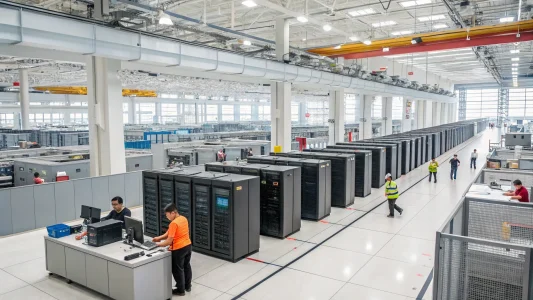Due to aggressive U.S. tariffs that forced Chinese companies to reroute shipments to other international markets, China reported a sharp drop in exports to the United States in April. The change was made right before U.S. and Chinese officials are expected to hold trade talks this weekend in Switzerland.
China’s exports to the US drop due to tariff escalation
The underlying data showed sharp shifts in trade flows, even though China’s total exports increased 8.1% in April over the same month last year, exceeding economists’ cautious predictions. China’s General Administration of Customs reported a 21% decline in shipments to the United States. On the other hand, exports to Africa and Latin America increased by 17% and 25%, respectively, while exports to Southeast Asia increased by 21%. Additionally, sales to the EU increased by 8.3%.
These changes highlight the growing influence of President Donald Trump’s trade policies in the United States. Beijing has responded to Trump’s 145% increase in tariffs on Chinese goods since he took office by imposing a 125% tariff on all U.S. imports. These tit-for-tat actions have redrawn trade routes and increased market uncertainty worldwide.
Chinese exports to the United States rose 9.1% in March, most likely as businesses rushed to ship their goods before the tariff increases. Compared to the same period in 2024, Chinese exports to the United States decreased 2.5% during the first four months of this year. Even though headlines increased in April, it was slower than the 12.4% increase in March.
China’s reliance on selling abroad
Given that China’s economy still depends heavily on exports—exports accounted for almost one-third of GDP growth last year—further contraction could jeopardize Beijing’s goal of 5% annual growth. Goldman Sachs and S&P Global analysts predict a 5% drop in Chinese exports this year, with new export orders reaching their lowest point since 2022.
China’s central bank responded this week by announcing new stimulus plans that include rate reductions and liquidity infusions to protect the economy from trade shocks. Officials have also accelerated efforts to diversify export markets and reroute shipments through countries like Vietnam and Thailand. Chinese exports to Vietnam, Thailand, and Indonesia increased by 23%, 28%, and 37% in April, respectively.
Manufacturers are reacting quickly. Jiaheng Toys, a toy manufacturer based in Dongguan, has reported a sharp decline in orders going to the United States and has moved more production to Vietnam, where it is building a factory. According to artificial plant manufacturer Sanmei Group, which echoed the trend, the majority of U.S. clients now ask for production in Vietnam rather than China.
The full economic impact of the tariffs has not yet been realized, despite indications that trade talks between the United States and China are beginning again, aided by discussions about fentanyl-related issues. Businesses on both sides are currently in a state of uncertainty as they await the results of this weekend’s diplomatic efforts.














